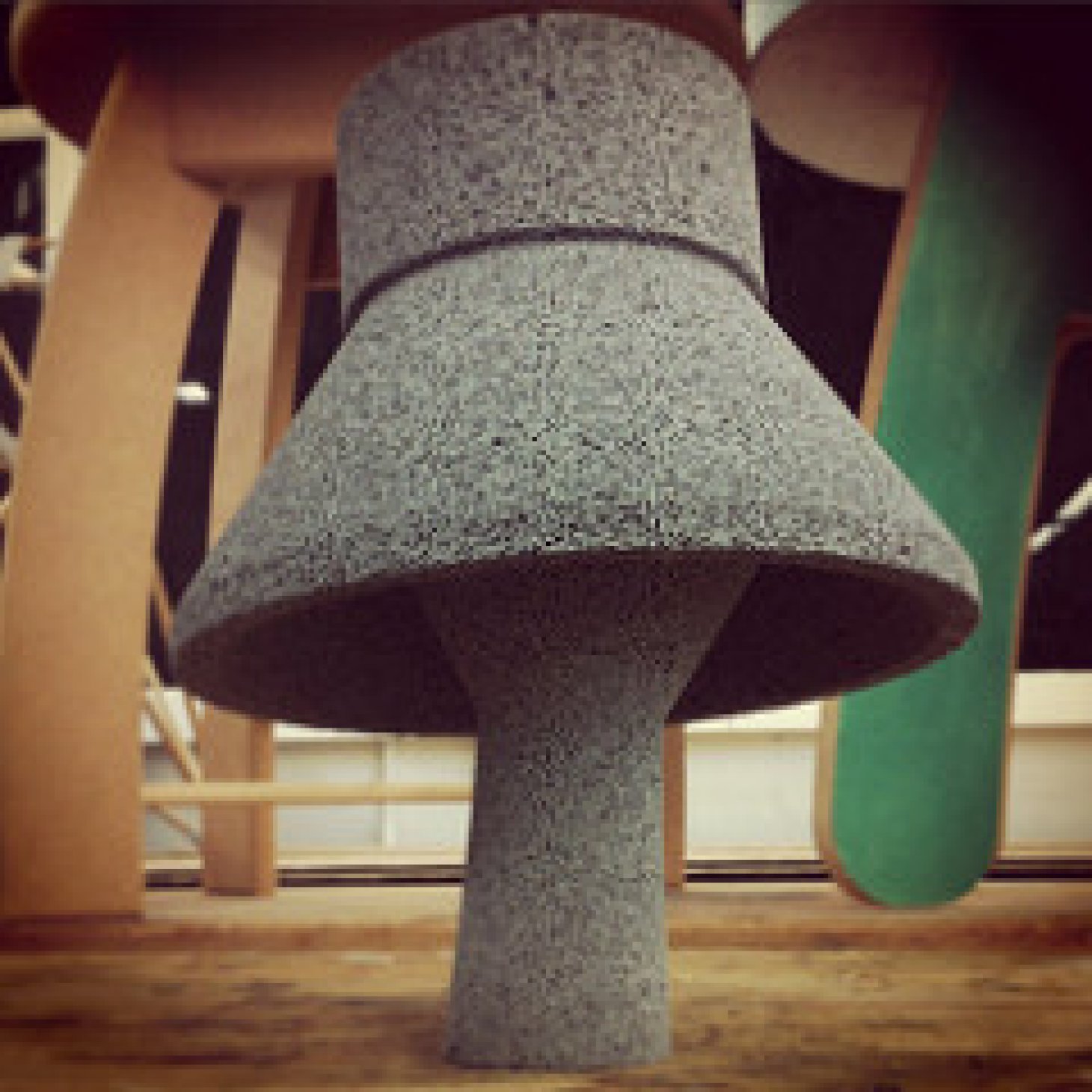
Through project support, social media and collaborative school visits, Kerry Truman has encouraged architecture and design students to use aircrete after realising himself that its properties made it an ideal model making and prototyping material.
For decades, H+H aircrete blocks have been selected by self-builders and contractors for projects of all sizes, because of its unique characteristics. The cellular structure makes them light, strong, and easy to work with. As it turns out, builders are not the only ones taking advantage of aircrete’s properties.
Kerry began his working life at Nottingham Trent University in 1987 as an apprentice and stayed on after his training ended. He is now a Senior Technician in the university’s School of Architecture Design and the Built Environment. Despite enjoying tinkering around with many materials, Kerry’s experiments with aircrete began after a Furniture Design student suggested using the material for a stool they were making as part of their project development.
“The students tend to bring the inspiration. I am not necessarily a designer, but I do enjoy being part of the creative process that coincides with developing their ideas. We encourage students to experiment with materials as we are always interested in the research aspect of a project as well.”
Being strong and light, aircrete is an ideal modeling material. Students of many disciplines such as Product Design, Furniture Design, and even Design and Technology within schools, could easily test their concepts using aircrete before progressing to more expensive and resistant materials. It offers an ideal opportunity to evaluate concepts quickly and effectively before committing to using concrete for their final project.
Kerry said: “The students are easily able to contrast it with other materials for their models. One of my students created a lamp for example, and added walnut sections of the design to see how it would look.
“Our final year students have yet to begin their major projects, but I am looking forward to seeing how they use aircrete to help realise their design ideas. I think they will find it a fantastic prototyping material. They will no doubt be aiming to produce something ‘outstanding’ that will get them attention and job offers for when they finish university, and so it’s vital that they feel they have the freedom to experiment with new materials and develop practical skills before putting together their final projects together.
Kerry has long believed that social media could be used to increase interest in the projects he is involved with. Initially used as a way to improve the engagement of his own students within the university workshop facilities, this has developed into a more collaborative and supportive approach to sharing ideas with the students he supports and with the Design & Technology community in schools around the country.
As a result of this exposure he has been on a number of visits to schools, to show future students how they can use aircrete and other materials within the workshop. Kerry’s work has resulted in students as young as 14 being inspired to start using aircrete within their D&T lessons.
“I try and get involved with as many schools as I can, collaborate on project work where possible and hopefully share ideas and inspiration along the way. If we can get the students in schools today interested in real life design problems and solutions, it will be these kids who are going to be potential university students and will hopefully go on to be the designers of the future.”
Kerry spotted a number of advantages aircrete has when compared to similar applications of concrete. For research and prototyping, there was no competition. “It would take about an hour to create a stool using aircrete on the lathe. To make the same stool using concrete, we would have to make a mould, mix the concrete, fill the mould, allow it to set over night, and even then it would be too heavy to use as a prototype. For projects with short deadlines, aircrete can make an ideal model making alternative.”
It seems that the same characteristics that make aircrete so useful in the building world, its lightness, strength and workability, also give it a surprising value to design students. It seems that with a bit of creativity, any project involving Celcon blocks can go a long way.
You can follow Kerry’s aircrete activities on Twitter @kerry_truman and YouTube channel